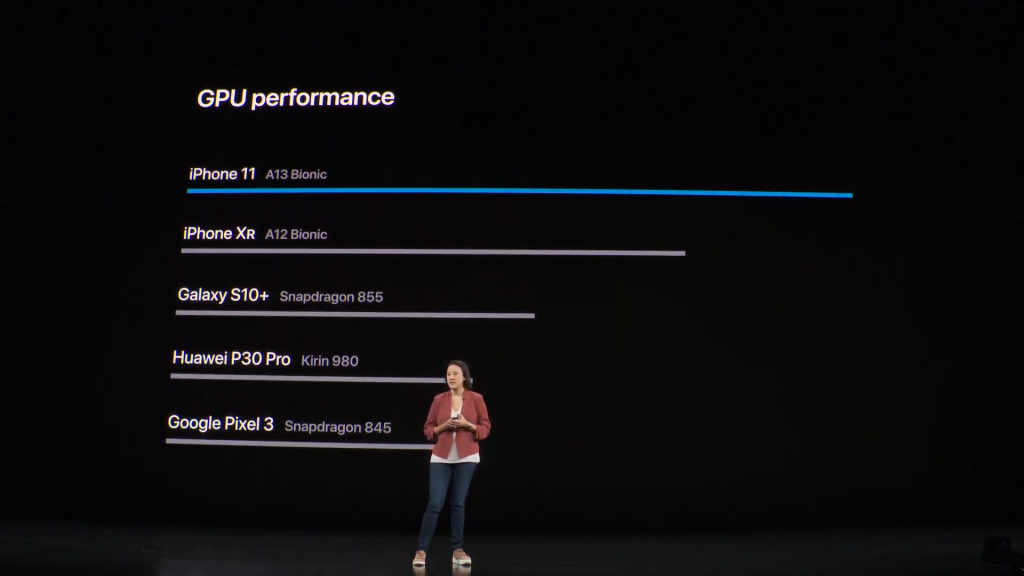Apple A13 Bionic: iPhone 11 processor features and specs detailed
Apple has announced the Apple A13 Bionic, the new system-on-chip processor that’ll power the Apple iPhone 11, iPhone 11 Pro, and iPhone 11 Pro Max.
Allowing for powerful features like 4K video at 60fps and slow-motion selfies aka ‘slofies’, as well as spatial audio, the Apple A13 Bionic has been described by Kaiann Drance, senior director, product marketing, iPhone, described the Apple A13 Bionic as the ‘fastest CPU and GPU ever in a smartphone’.
Bullishly, Apple’s claiming that this will wipe the floor with Qualcomm’s Snapdragon 855 chip, seen in the Samsung Galaxy S10 Plus, as well as Huawei’s Kirin 980, seen in the Huawei P30 Pro.
Related: iPhone 11
After Drance introduced the A13 Bionic chip at Apple’s iPhone 11 event, Sribalan Santhanam, vice president of Apple’s silicon engineering group took to the stage to talk about the key points of the A13 Bionic.
The short version is, it builds on the machine learning features the previous chip, the A12 Bionic, introduced, increasing overall performance, while offering gains in power efficiency, and therefore battery life.
Santhanam described the A13 Bionic as Apple’s “Most efficient chip to date,” which uses the second generation of Apple’s 7nm (nanometre) process, which packs 8.5 billion transistors onto each chip, compared with the 6.9 billion transistors of the A12 Bionic. Santhanam’s team has “tailored each transistor for higher performance and low power.”

As with the A12 Bionic, the entire A13 Bionic system-on-chip features a total of 18 cores – a six-core CPU, four core GPU, and an eight-core Neural Engine processor, which is dedicated to handling on-board machine learning processes.
Four of the six cores on the CPU are low-powered cores that are dedicated to handling basic phone operations – i.e. taking calls, launching Safari, sending messages – while two bigger performance cores lie dormant until you action more intensive processes, like recording 4K video, or playing a game.
Compared to the similar A12 Bionic, the four efficiency cores are 20% faster, and use 40% less power, while the high performance cores are 20% faster, requiring 30% less power.
Likewise, the four cores of the GPU run 20% faster than the previous generation, and use up 40% less power, while the eight cores of the Neural Engine run 20% faster but eat up 15% less juice.
Santhanam said that overall, the A13 Bionic is 6x faster than the A12 Bionic, and by only turning on the smallest amount of logic required on the chip, Apple’s able to squeeze more perf per Watt out of the chip.
Those are all the details officially announced by Apple at the moment. From this, we can infer that the four high performance cores are clocked at 2.9 GHz, compared to the 2.49 GHz clock speeds of the A12 Bionic’s Tempest cores, but until we get confirmation from Apple, this is just speculation.
Editor’s Note – This is developing, more details as and when they’re announced…






